Abstract
Cisapride is a newly developed substance that stimulates gastrointestinal motility, possibly enhancing acetylcholine release in the gut wall. The aim of our study was to investigate the effect of cisapride on oesophageal motor function in man. In a blind fashion and in random order six healthy volunteers received cisapride (0.5 mg/h intravenously, preceded by a three day oral loading at 10 mg tid) and matching placebo. Oesophageal contractions and lower oesophageal sphincter pressure were constantly recorded during a complete cycle of the interdigestive migrating motor complex and during two and half hours after a mixed test meal. Cisapride did not disturb the interdigestive migrating motor complex. In the fasting state the lower oesophageal sphincter pressure showed considerable interdigestive migrating motor complex phase-related variations, whereas amplitude and duration of the oesophageal contractions did not. In the dosis used cisapride was found to increase lower oesophageal sphincter pressure in the interdigestive and in the late postprandial state, but to have no effect in the early postprandial period. Amplitude and duration of oesophageal contractions were not affected by cisapride.
Full text
PDF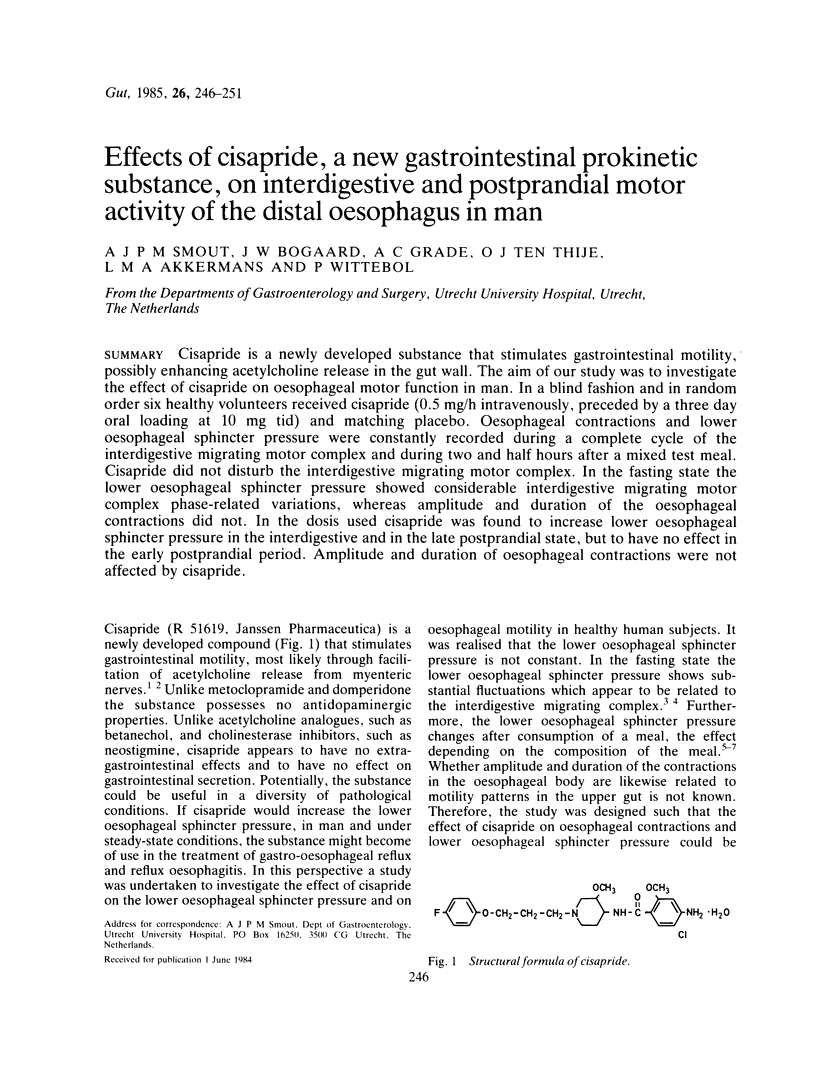
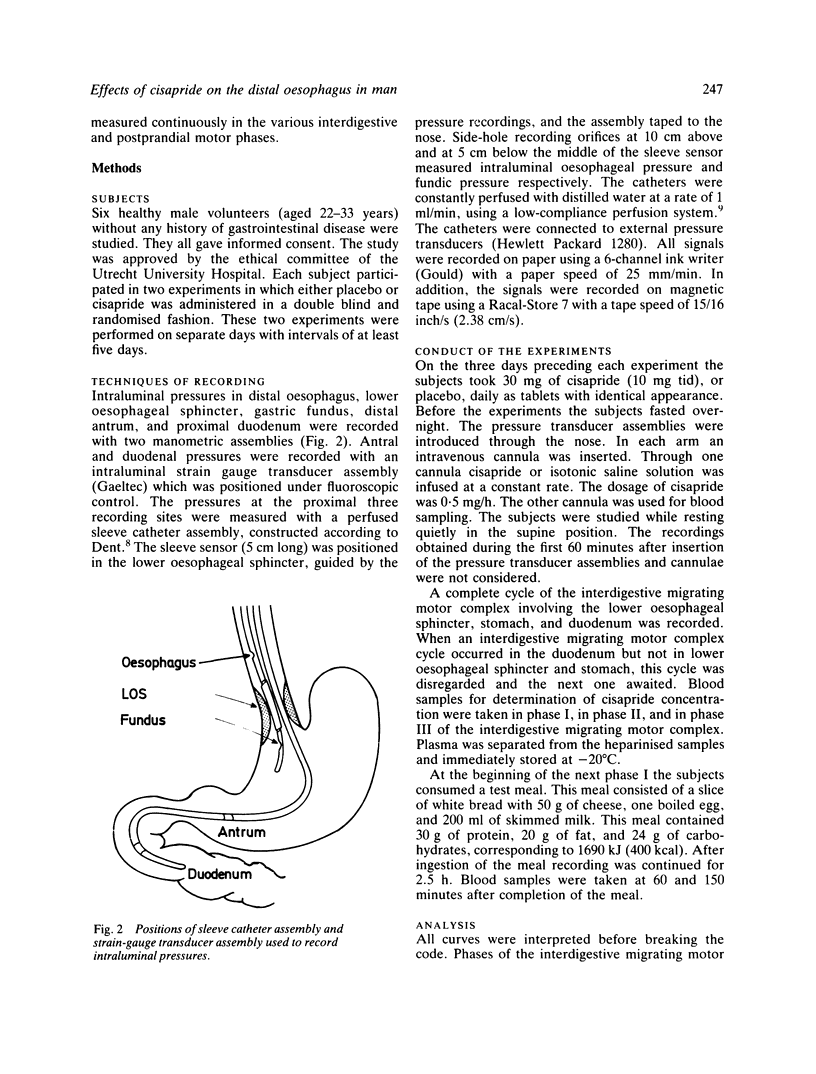
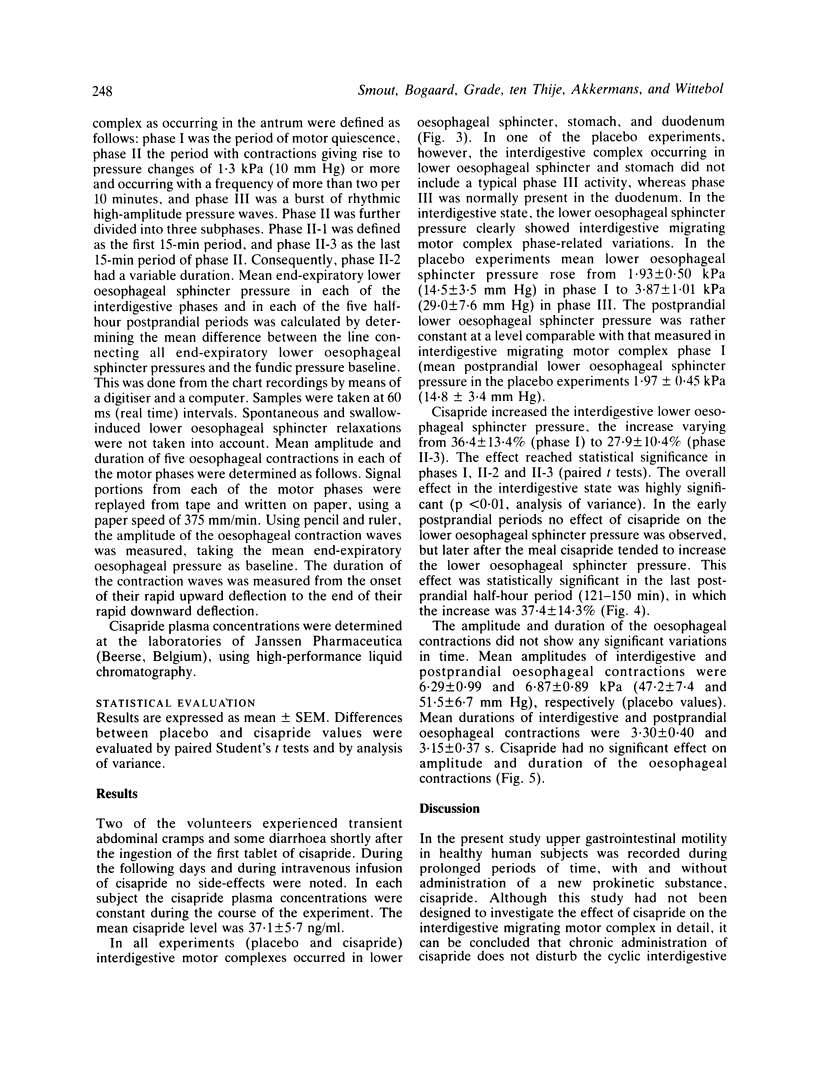
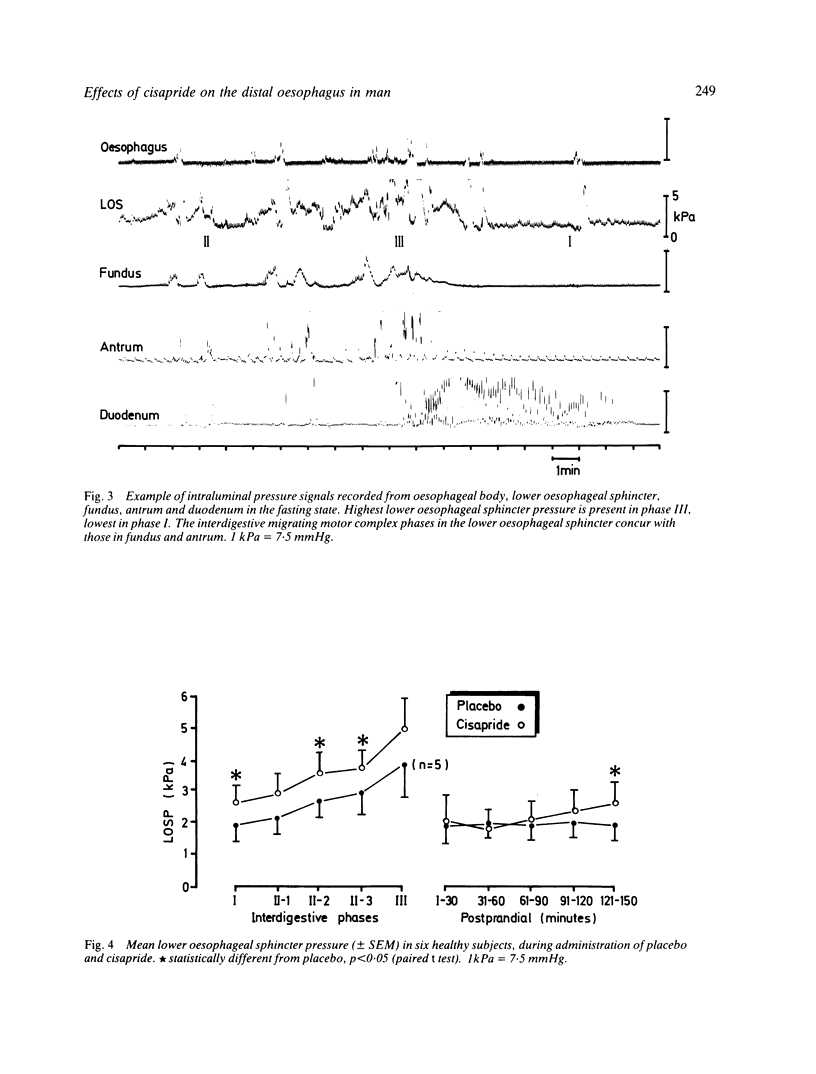
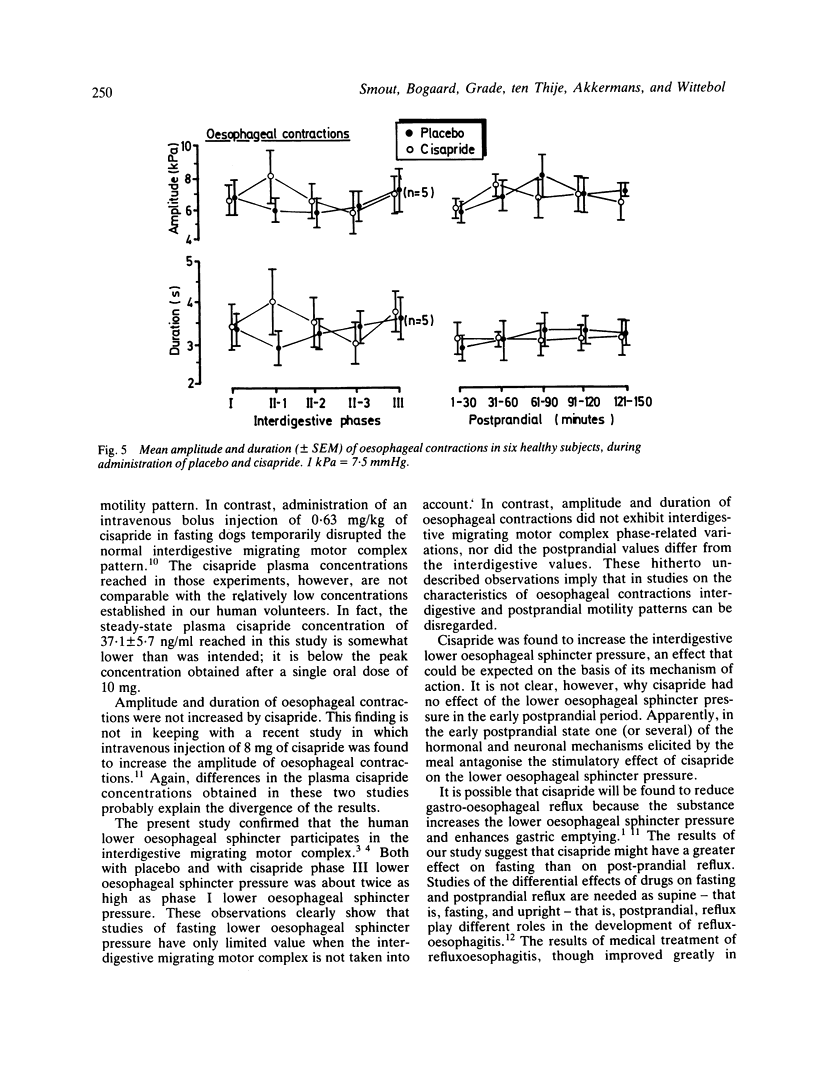
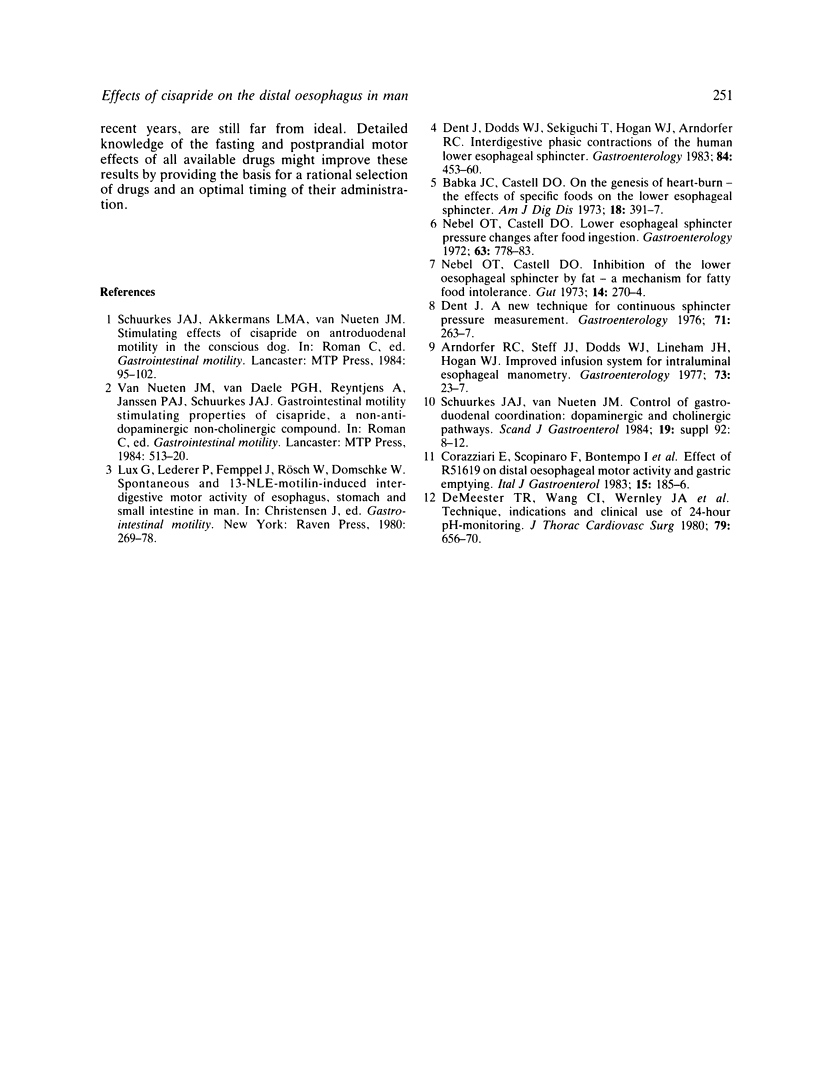
Selected References
These references are in PubMed. This may not be the complete list of references from this article.
- Arndorfer R. C., Stef J. J., Dodds W. J., Linehan J. H., Hogan W. J. Improved infusion system for intraluminal esophageal manometry. Gastroenterology. 1977 Jul;73(1):23–27. [PubMed] [Google Scholar]
- Babka J. C., Castell D. O. On the genesis of heartburn. The effects of specific foods on the lower esophageal sphincter. Am J Dig Dis. 1973 May;18(5):391–397. doi: 10.1007/BF01071988. [DOI] [PubMed] [Google Scholar]
- DeMeester T. R., Wang C. I., Wernly J. A., Pellegrini C. A., Little A. G., Klementschitsch P., Bermudez G., Johnson L. F., Skinner D. B. Technique, indications, and clinical use of 24 hour esophageal pH monitoring. J Thorac Cardiovasc Surg. 1980 May;79(5):656–670. [PubMed] [Google Scholar]
- Dent J. A new technique for continuous sphincter pressure measurement. Gastroenterology. 1976 Aug;71(2):263–267. [PubMed] [Google Scholar]
- Dent J., Dodds W. J., Sekiguchi T., Hogan W. J., Arndorfer R. C. Interdigestive phasic contractions of the human lower esophageal sphincter. Gastroenterology. 1983 Mar;84(3):453–460. [PubMed] [Google Scholar]
- Nebel O. T., Castell D. O. Inhibition of the lower oesophageal sphincter by fat--a mechanism for fatty food intolerance. Gut. 1973 Apr;14(4):270–274. doi: 10.1136/gut.14.4.270. [DOI] [PMC free article] [PubMed] [Google Scholar]
- Nebel O. T., Castell D. O. Lower esophageal sphincter pressure changes after food ingestion. Gastroenterology. 1972 Nov;63(5):778–783. [PubMed] [Google Scholar]
- Schuurkes J. A., Van Nueten J. M. Control of gastroduodenal coordination: dopaminergic and cholinergic pathways. Scand J Gastroenterol Suppl. 1984;92:8–12. [PubMed] [Google Scholar]


